Geology
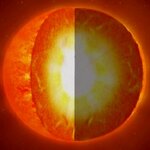
Sounding the Sun through a technique similar to seismology has opened a new era for understanding the Sun’s interior. The CNES/ESA COROT satellite has now applied this technique to three stars, directly probing the interiors of stars beyond the Sun for the first time. When global oscillations of the Sun were discovered, scientists realised they opened a window to the Sun’s interior. Like the propagation of seismic waves on Earth providing information about our planet’s interior, sound waves travel throughout the Sun carrying information about what is happening below the surface. …

Researchers from McGill University, the California Institute of Technology, the Curie Institute in Paris, Princeton University and other institutions, have unearthed crystalline magnetic fossils of a previously unknown species of microorganism that lived at the boundary of the Paleocene and Eocene epochs, some 55 million years ago.
The research might help scientists understand more thoroughly the potential effects of significant changes in the Earth's climate.
Though they are only some four microns long, these newly discovered, spear-shaped magnetite crystals (magnetofossils) – unearthed at…
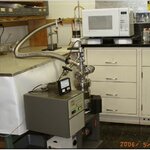
When astronauts land on the Moon again they may be able to get a critical commodity there – water.
Bill Kaukler, an Associate Research Professor in the Center for Materials Research at The University of Alabama in Huntsville, has spent the past three years investigating the use of microwaves to replenish water on space missions or as a rocket fuel supply.
“A lot of people think that water doesn’t exist on the Moon,” said Kaukler. “It’s true that not all parts of the Moon have water. Where the Apollo missions landed, there isn’t much water because it is exposed to the sun half of the time.…
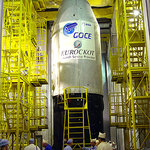
Credit: European Space Agency
The fairing, which encapsulates the GOCE satellite, with the GOCE and Eurockot logos.
There is no reason to be surprised or shocked by the fact that the launch of GOCE suffer yet another delay. This time they are having some trouble with the launcher at the Plesetsk Cosmodrome in northern Russia where the action will take place, now presumably 27th October 2008. Shit happens. As long as we get this beauty of a satellite into orbit eventually, safe and sound, it is all fine and dandy by me. :-)
The Gravity field and steady-state Ocean Circulation Explorer (GOCE…

As the world looks for more energy, the oil industry will need more refined tools for discoveries in places where searches have never before taken place, geologists say. One such tool is a new sediment curve (which shows where sediment-on-the-move is deposited), derived from sediments of the Paleozoic Era 542 to 251 million years ago, scientists report in this week's Science. The sediment curve covers the entire Paleozoic Era.
"The sediment curve is of interest to industry, and also to scientists in academia," said Bilal Haq, lead author of the paper and a marine geologist at the National…
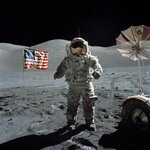
The Apollo Moon missions of 1969-1972 all share a dirty secret. "The major issue the Apollo astronauts pointed out was dust, dust, dust," says Professor Larry Taylor, Director of the Planetary Geosciences Institute at the University of Tennessee. Fine as flour and rough as sandpaper, Moon dust caused 'lunar hay fever,' problems with space suits, and dust storms in the crew cabin upon returning to space.
The trouble with moon dust stems from the strange properties of lunar soil. The powdery grey dirt is formed by micrometeorite impacts which pulverize local rocks into fine particles. The…

Some of the world’s rarest and most precious metals, including platinum and iridium, could owe their presence in the Earth’s crust to iron and stony-iron meteorites, fragments of a large number of asteroids that underwent significant geological processing in the early Solar System.
Dr Gerhard Schmidt from the University of Mainz, Germany, has calculated that about 160 metallic asteroids of about 20 kilometres in diameter would be sufficient to provide the concentrations of these metals, known as Highly Siderophile Elements (HSE), found in the Earth’s crust. Dr Schmidt will be presenting his…

An artificial meteorite designed by the European Space Agency has shown that traces of life in a martian meteorite could survive the violent heat and shock of entry into the Earth’s atmosphere. The experiment’s results also suggest that meteorite hunters should widen their search to include white rocks if we are to find traces of life in martian meteorites.
The STONE-6 experiment tested whether sedimentary rock samples could withstand the extreme conditions during a descent though the Earth’s atmosphere where temperatures reached at least 1700 degrees Celsius. After landing, the samples were…
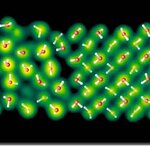
The deep interior of Neptune, Uranus and Earth may contain some solid ice.
Through first-principle molecular dynamics simulations, Lawrence Livermore National Laboratory scientists, together with University of California, Davis collaborators, used a two-phase approach to determine the melting temperature of ice VII (a high-pressure phase of ice) in pressures ranging from 100,000 to 500,000 atmospheres.
For pressures between 100,000 and 400,000 atmospheres, the team, led by Eric Schwegler, found that ice melts as a molecular solid (similar to how ice melts in a cold drink). But in pressures…

An international team of earth scientists report movement of warmed sea water through the flat, Pacific Ocean floor off Costa Rica. The movement is greater than that off midocean volcanic ridges. The finding suggests possible marine life in a part of the ocean once considered barren.
With about 71 percent of the Earth's surface being ocean, much remains unknown about what is under the sea, its geology, and the life it supports. A new finding reported by American, Canadian and German earth scientists suggests a rather unremarkable area off the Costa Rican Pacific coast holds clues to better…